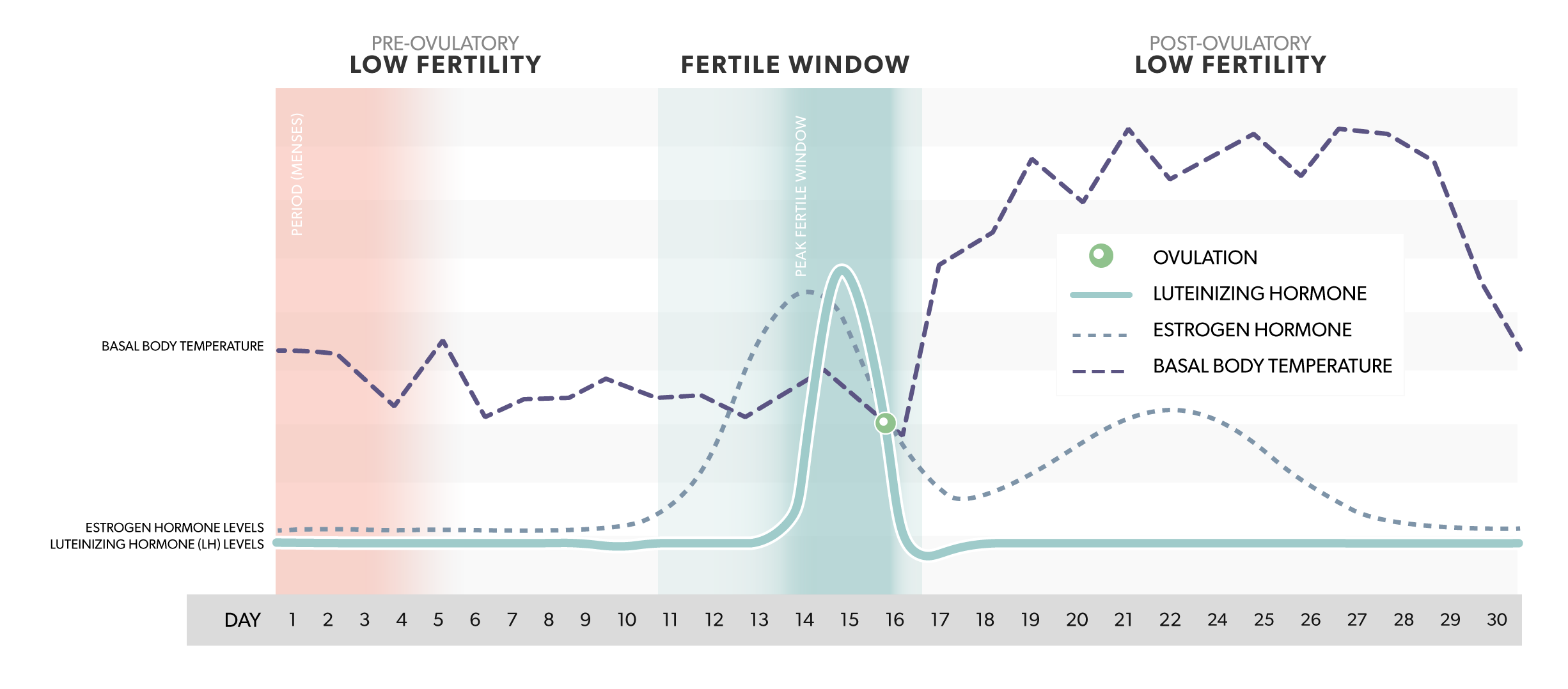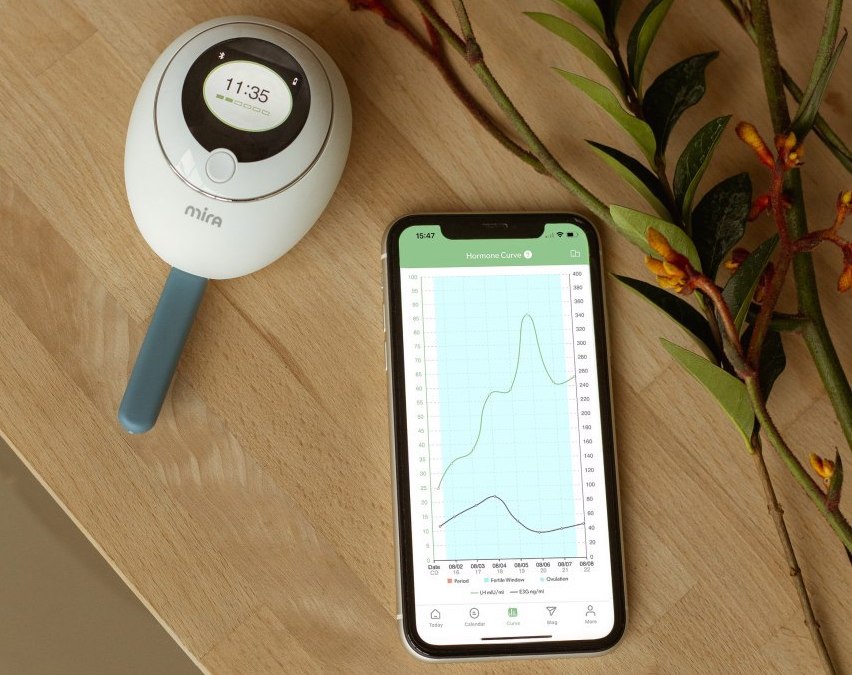What is Natural Family Planning?
In simple terms, NFP is planning a family in a natural way by using a woman’s signs, symptoms, and hormones to monitor her fertility. Knowing when she is fertile, she can intend to achieve a pregnancy, or identify those days to postpone a pregnancy naturally, without the use of artificial hormones or devices.

NFP also refers to abstaining from sexual intercourse and any genital activity (including using the withdrawal method or condoms) during the fertile time of the menstrual cycle if a woman is avoiding pregnancy. NFP works by paying attention to your body’s natural signs and symptoms, including:
Awareness of the fertile phase using signs such as (1):
- Observed cervical mucus changes
- Basal body temperature (BBT)
- Testing hormones such as estrogen, LH, and progesterone in urine
Methods of NFP can be used effectively to achieve or postpone pregnancy since women can use it to pinpoint their unique fertile window during the menstrual cycles. While signs like temperature and cervical mucus changes are recorded daily on an NFP chart, women can detect and include the identification of fertile hormones by using a digital fertility tracker as the Mira Fertility Plus. This monitor allows you use daily testing of estrogens and LH levels, this further helps to identify your unique hormonal patters whether the menstrual cycle is regular or not.
Awareness of your normal ovulatory cycle using common signs such as (2):
- Changes in cervical mucus, such as the progression from dryness to stickiness, wetness, and lastly lubrication.
- The detection of estrogen in the urine, which rapidly increases in higher levels to trigger the release of LH and then ovulation, occurs.
- The detection of LH in the urine, which surges at ovulation.
- The dramatic change of sensation from lubrication to dryness at the level of the vulva, signifying that progesterone has been produced by the corpus luteum.
- The arrival of menstruation 11 to 16 days after ovulation.
If you are struggling to conceive, recording your observations — including the hormonal concentration– each day, and providing this information to your health care professional OB/GYN will assist in the diagnosis of a specific problem.
Awareness of the cyclical patterns that indicate a regular ovulatory cycle, including (3):
- The increasingly higher levels of estrogen over a few days prior to an LH surge
- Surging LH levels over a matter of hours, which triggers ovulation
- Ovulation, which triggers the formation of the corpus luteum
- Formation of the corpus luteum, which produces progesterone
- Decreases in estrogen and progesterone prior to menstruation
- Regular menstruation
How Mira Helps With NFP
Knowledge of the pattern of your menstrual cycle is important, but adding more data to this by using the Mira Fertility Plus gives a more complete picture and contributes to the diagnosis of problems such as anovulatory cycles, polycystic ovarian syndrome and other hormonal problems. It provides you with important information for you to share with your health care provider.

Every woman should have access to the technology that helps her identify the patterns in her menstrual cycle, and every woman should be aware of how to use this information to avoid or postpone pregnancy without the need of hormonal or barrier methods. Mira Fertility Plus can help you to know the hormonal pattern of any menstrual cycle and what it means about your fertility and overall health.
Related: 116 Fertility Abbreviations & Acronyms You Need to Know
The effectiveness of NFP methods to postpone pregnancy is based on the accurate detection of the beginning and end of the fertile window in a woman’s menstrual cycle. Abstinence is practiced during this phase. Mira fertility Plus provides an accurate assessment of a menstrual cycle and a successful use of an effective natural family planning method.
References:
World Health O. Natural family planning : a guide to provision of services. Geneva: World Health Organization; 1988.
Vigil P, Ceric F, Cortés ME, Klaus H. Usefulness of Monitoring Fertility from Menarche. Journal of Pediatric and Adolescent Gynecology. 2006;19(3):173-9.
Vigil P, Blackwell LF, Cortés ME. The importance of fertility awareness in the assessment of a woman’s health: A review. Linacre Quarterly. 2012;79(4):426-50.
Mira’s Editorial Process
All content produced by Mira meets stringent editorial standards, ensuring excellence and accuracy in language and medical precision. Every piece undergoes thorough fact-checking and review by qualified professionals. Check out our full editorial process to learn more.




